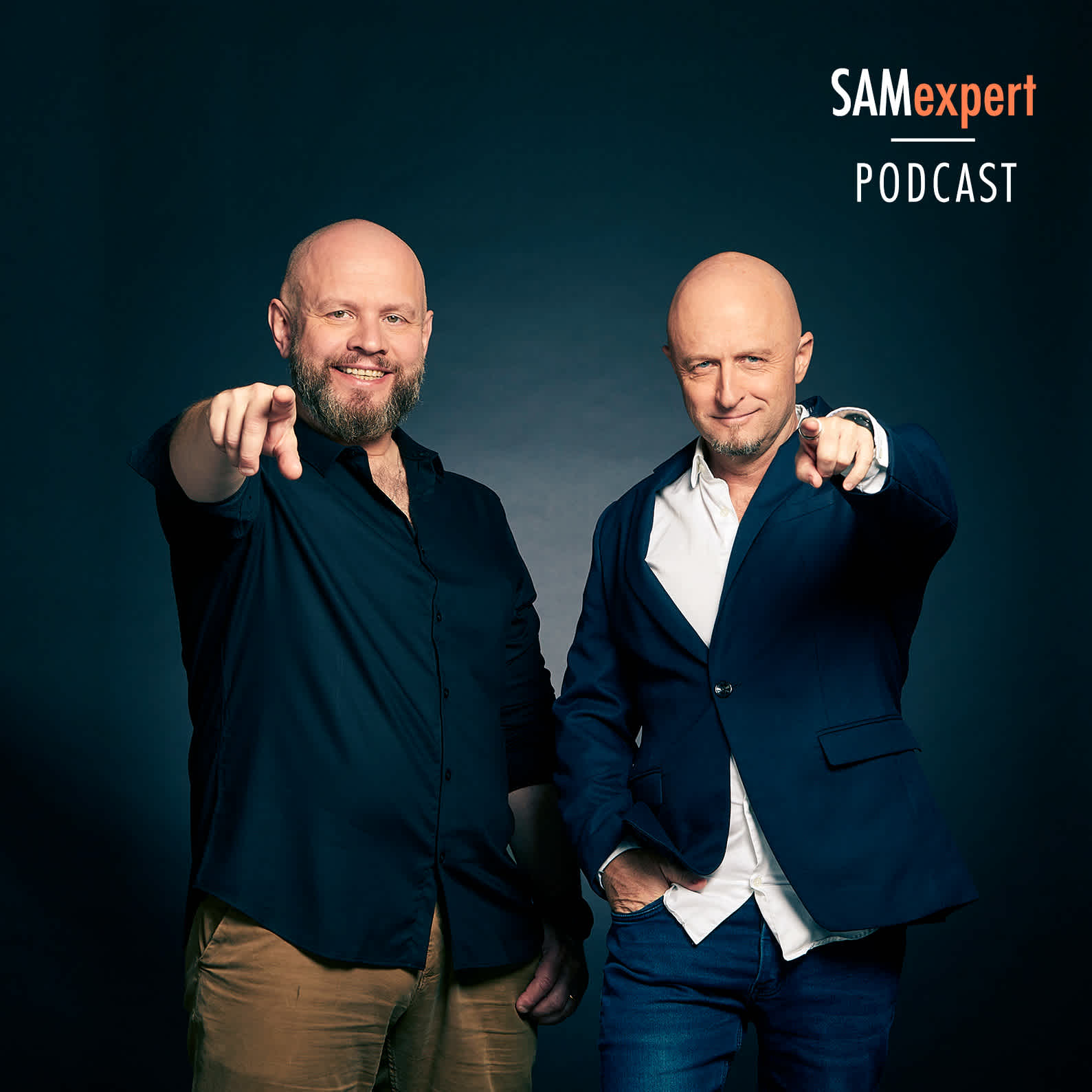Economic impact of changes to SQL Server 2022 licensing

Alexander Golev and Daryl Ullman discuss the changes Microsoft introduced into SQL Server licensing in December 2022 and the impact of the changes on budgets and compliance – the good, the bad and the ugly.
Episode Transcript
Alexander: Welcome to the SAMexpert podcast, focusing on Cloud Economics and Enterprise Licensing. I'm Alexander Golev, joined by Daryl Ullman.
Today, we're diving into Microsoft's recent changes to SQL Server licensing, introduced at the end of 2022, and exploring their economic impact.
Daryl: A key concern I've been hearing is about the impact of these changes on our 2023 budgets.
Alexander: For many, especially those under long-term agreements like Enterprise Agreements (EA) who primarily purchase SQL Server licenses this way, the changes in 2023 might go unnoticed. However, the significant shift with SQL Server 2022 is the requirement for active Software Assurance to license SQL Server per virtual machine. This means for EA clients with compulsory Software Assurance, there's no real change.
But for those using legacy licenses, who meticulously manage each license across departments and branches, it's a different story. These clients, if they choose to upgrade to SQL Server 2022, must now repurchase licenses with Software Assurance. Previously, they could have opted for purely CapEx, perpetual licenses. That's no longer an option, forcing a move towards an OpEx model, like Software Insurance or subscription licenses.
This change will inevitably increase the total cost of ownership for these instances, potentially doubling it in the coming years.
Daryl: So, if I'm under an Enterprise Agreement, with set pricing and Software Assurance, there's no impact from these changes. But what about CSP customers? Will they see any impact?
Alexander: In the CSP model, you have two types of licenses. First, there are perpetual licenses without Software Assurance. If these are currently used for SQL Server virtual machines in single host configurations, you're fine for now. However, if you plan to upgrade to SQL Server 2022, you must switch to an OpEx model, meaning a subscription is necessary. Upgrading and buying another perpetual license isn't an option for virtual machine configurations.
Another point to consider is the support lifespan for SQL 2019. If Microsoft discontinues support, releasing no further security updates, many will need to upgrade. This means a complete review of their SQL Server licensing strategy and, inevitably, increased costs.
Daryl: What about the actual pricing of SQL? Has there been an increase?
Alexander: Yes, by 10%.
Daryl: So, as a CSP customer on a monthly model, will I see this increase as soon as a new price list is released? Is there any price protection?
Alexander: If you're on a monthly plan, the increase is immediate.
Daryl: That means my monthly costs could go up by 10%, depending on the terms with my reseller. That's an immediate impact.
Alexander: Exactly.
Daryl: This is quite different from an EA, where you're locked into a three-year contract with stable pricing. For CSP customers, whether on monthly or annual plans, this means they'll feel the impact at some point in 2023.
Alexander: CSP also offers three-year subscriptions, where you essentially lock in the price. But here's where an EA has an advantage. With a three-year CSP subscription, you get a discount compared to annual prices, but it's not the same as an EA. It's a one-time, upfront payment for the entire three years without the option of spread payments or adjustments, which you still have in an EA. An Enterprise Agreement Subscription, being a three-year contract, is more like three annual subscriptions bundled together, allowing you to adjust each year. So, EA remains more flexible. However, annual subscriptions in CSP lock in that year's price.
Daryl: So, for just a year. That means we could see a 10% increase at some point in 2023.
Alexander: Exactly.
Daryl: What about Azure? Is there any impact there on pricing or licensing?
Alexander: Azure actually introduced a positive change. A quick overview: in Azure, you can either pay as you go for services directly purchased from Azure or bring your own licenses. Before December, passive instances like Disaster Recovery or High Availability didn't need licenses if you brought your own to Azure. But if you used Azure's pay-as-you-go for these instances, you had to pay for them. In December, Microsoft aligned Azure terms with on-premise terms. This means if you have an active SQL Server instance and a standby secondary instance in Azure, you only pay for compute and storage costs, not the SQL Server license. This will reduce costs in Azure.
Daryl: That's a great benefit. Very positive.
Alexander: The December changes brought another positive aspect. However, it's likely to impact fewer than 5% of companies. Now, when you license SQL Server per virtual machine, you get unlimited containers within those VMs. Previously, each container was counted as a separate VM. It's a significant change, but how many companies actually use containers inside VMs? That's the question.
Daryl: This new benefit of unlimited containers could open doors for cost reduction and optimisation in SQL container usage. If you're a DBA or licensing manager, it's worth exploring this, as it could lead to substantial savings.
Alexander: We've updated our SQL server cost reduction strategies, including consolidation and container usage. You can find detailed information on our SAMexpert.com website under the SQL Server section. It's all based on our practical experience in optimising licensing.
Daryl: Continuing on cost optimisation, there's a new licensing model for on-premise SQL Server use, similar to Azure's pay-as-you-go, based on usage. Could you elaborate on that?
Alexander: Certainly. You can deploy SQL Server on-premises with Azure Arc, connecting it to Azure, and opt for a pay-as-you-go model. This means you only pay for the time you use it, even if it's just a few minutes a month. However, it must always be connected to Azure for usage tracking. This model is particularly cost-effective for SQL Server instances used seasonally or infrequently, for example, only one day a week.
Daryl: I'm going to put you on the spot here, Alex. Pay-as-you-go for on-premise use, connected to Azure, has traditionally been a cloud-only feature. Now, it's extending to on-premise licensing. It's a very interesting concept. Do you think we'll see more of this for other products? Could this be the future of server licensing or perhaps even desktop licensing from Microsoft?
Alexander: It's more likely than not. If this proof of concept is successful, Microsoft might well consider extending this approach. It would shift software more towards a consumption model, which is ultimately where they're aiming to be.
Daryl: Returning to SQL Server licensing, let's talk about test and development deployments. Could you shed some light on SQL Server Test and Dev, particularly the rights via Visual Studio as opposed to commercial licenses?
Alexander: I always advise you to listen carefully when I respond to these questions because it's a minefield. Let's start with the basics. The Visual Studio Professional Subscription, which is the most affordable Visual Studio option, includes Windows Server and SQL Server. You can install and use these products for testing, development, demonstration, and non-production purposes in unlimited instances. As far as I remember, and I believe I'm up to date, this subscription gives you access to both the Standard and Enterprise editions of SQL Server.
Now, here's the tricky part. Say you have five developers and a 200-strong IT team supporting a development sandbox. If that IT team uses software from the Visual Studio subscription to support these developers, then every single one of those 200 IT staff members needs the same subscription. Do you see the problem?
Daryl: You mean they all need a Visual Studio license?
Alexander: Exactly. Anyone involved in any way – supporting, backing up, configuring, monitoring with SCCM – with non-production workloads needs a similar MSDN license per user.
You do get both Standard and Enterprise editions, but for SQL Server development specifically, we always recommend deploying the SQL Server Developer Edition. It's technically equivalent to SQL Enterprise.
Daryl: Is that still available?
Alexander: Absolutely, and it's completely free. It used to be $50 per user per year, but then Microsoft made it free. It's a no-brainer.
Daryl: Let's say I install SQL Server Enterprise Edition for test and dev purposes using a commercial license. But my intention is solely for a development environment, which is precisely what I'm doing. Am I in the wrong? Do I need to buy an Enterprise Edition license?
Alexander: It all hinges on the type of license. If it's an enterprise commercial license acquired through an EA, you're free to use it as you wish.
Daryl: But then, I must pay for an enterprise license, even if it's only for development purposes, mustn't I?
Alexander: Yes, absolutely. If you're using an Enterprise license, that's the case. The alternative is to purchase a Visual Studio subscription. Or, as I mentioned earlier, you could opt for the SQL Server Developer Edition.
Daryl: So, I have two proper alternatives: either the free Developer edition, which offers the same capabilities as the commercial Enterprise or Standard editions, or through Visual Studio. Both are the correct routes for non-production use.
Alexander: Exactly.
Connect with Our Experts
Provide your details and describe your challenges, and a senior expert will get back to you shortly.
Prefer a call?
Get things going faster with a face-to-face chat.

